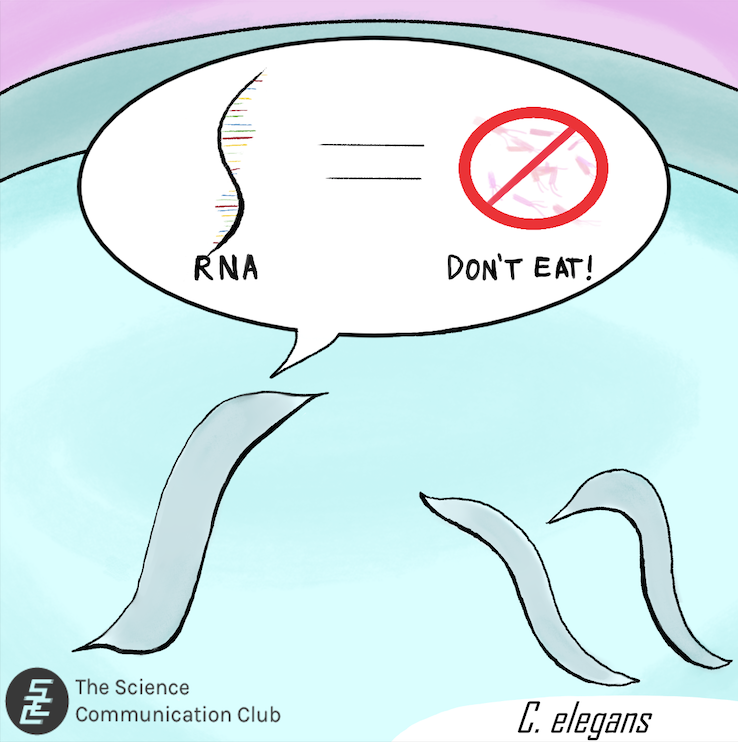
Written by Samuel Salamun
Illustrated by Peter Hong
Have your parents ever told you not to eat something growing up? Chances are they have eaten it themselves before and it made them sick, so they don’t want their kids to experience that as well. While we humans are lucky that we can communicate warnings to each other effectively, most animals have not evolved intricate speech to be able to communicate with others with the same ease. However, they have other ways to warn their children not to eat something. But before we jump right in, we need to review how weinherit traits from our parents.
Traits and characteristics are normally passed down from the parents to the children through the transfer of genetic material called DNA. As a result, changes or mutations in the parental DNA are also transmitted to the offspring, resulting in different characteristics from that of the parent. However, some changes in the characteristics are not due to changes in the genetic code itself but due to a phenomenon called epigenetics.Epigenetic changes affect how your cells read the DNA. Interestingly, these epigenetic changes can be inherited by the offspring through a process called epigenetic inheritance.
Researchers have found that tiny roundworms calledCaenorhabditis eleganscan warn their offspring to avoidPseudomonas aeruginosa, a species of bacteria that can harm these worms, through epigenetic inheritance. This avoidance behaviour can be observed in their children, grandchildren, even their great-grandchildren! So how do these worms do it?
To answer this question, a group of researchers fed worms with either chemicals secreted by the bacteria, called metabolites, or the bacteria’s genetic material. The latter includes three different types of molecules: DNA,which stores all the information to make proteins, messenger RNA (mRNA), which transmit information from the DNA to the protein factories, and small RNA (sRNA), which is a different type of RNA that can destroy mRNA. They later found that one specific bacterial sRNA, called P11, was able to induce avoidance behaviour in worms. They then showed that when a worm eats the bacteria, the P11 sRNA is processed in the worm’s intestine and travels to the worm’s eggs and sperm.
But the journey doesn’t stop there! P11 sRNA further travels to the neurons that control the avoidance behaviour, where it destroys mRNA that produces a protein called MACO-1. Interestingly, the absence of the MACO-1 protein allows the worm to avoid consuming more of these harmful bacteria. Also, bydepositing P11 sRNA in the eggs and sperms, the worms ensure that their progeny will receive this sRNA without having to encounter the bacteria first.Through this process, the worm parents are looking out for their baby wormsto keep the worm population healthy and thriving.
Sources:
- Kaletsky, R., Moore, R.S., Vrla, G.D. et al. C. elegans interprets bacterial non-coding RNAs to learn pathogenic avoidance. Nature 586, 445–451 (2020). https://doi.org/10.1038/s41586-020-2699-5
- Princeton University. “Researchers discover how worms pass down knowledge through the generations.” ScienceDaily. ScienceDaily, 17 September 2020.